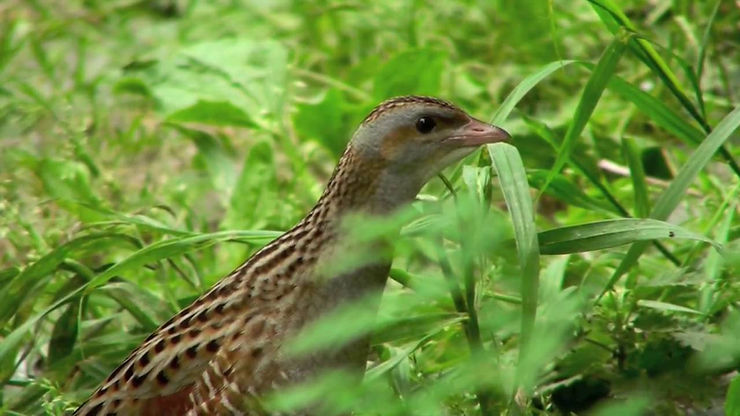By: Emily Hur
The corncrake population used to cover Ireland, but agricultural practices have severely diminished its numbers. To prevent their extinction, the country’s government recently started Corncrake Life, a program that collaborates with farmers to restore the bird’s natural habitat.
While populations in Asia and Eastern Europe are flourishing, corncrakes in Western Europe are barely surviving. The population in Ireland decreased by 96 percent since the 1970’s. Conservation efforts have stabilized the numbers to around 150 breeding pairs, but additional help is needed for a full recovery.
The tiny, shy bird has a long neck and a round body. Its silver head blends into a blackish brown back. The corncrake is mainly known for its loud, unique call which sounds like a buzzer. The short, monotonous mating calls come from males hiding in the grass.
Its breeding season starts in midsummer which used to be before farmers mowed their grass. However, artificial fertilizers and advanced farming technology allows people to cut their meadows earlier, destroying the tall grass that corncrakes hide and breed in. This makes the birds easier prey and lowers their reproduction rates.
“I remember in the 1970s, this area was full of corncrakes,” Patrick Mangan, a farmer in Ireland, said. “Then farmers started mowing grass earlier, and that ruined it, until the last corncrake in this area was right here, on this land. The corncrake was nearly wiped out here. And if he is, we’ll never get him back again.”
Most of Ireland’s remaining corncrakes live near the coasts. The wet, windy conditions are not suitable for growing crops which helps protect the bird’s natural habitat from human intervention. However, Corncrake Life wants to expand the bird’s population further inland by working with local farmers. If farmers increase the plant diversity in their meadows, then they can recreate the corncrake’s ideal environment and help them thrive.
“For generations, farmers have been told that nettles are weeds. They’re dirty. Get rid of them,” John Carey, the director of Corncrake Life, said. “They’re a hard sell for farmers, but they are really good cover for corncrakes.”
The organization pays €304 euros per acre of approved corncrake-safe land. To meet their requirements, farmers need to have a section of land exclusively for corncrake breeding. The remaining land should have a variety of native flowers, grass, and weeds. The farmers should also refrain from using harmful chemicals, such as artificial fertilizers, pesticides, and weed killers.
Many people were enthusiastic to join the conservation effort, especially the elderly. The corncrake was common decades ago, and older residents tend to associate it to their youth.
It’s call might remind some of old romantic dinners or late-night card games. “It’s part of history. It’s in their memory,” Sean McKeown, the director of Fota Wildlife Park in County Cork, said about the farmers. “The good old days, when they were young.”











